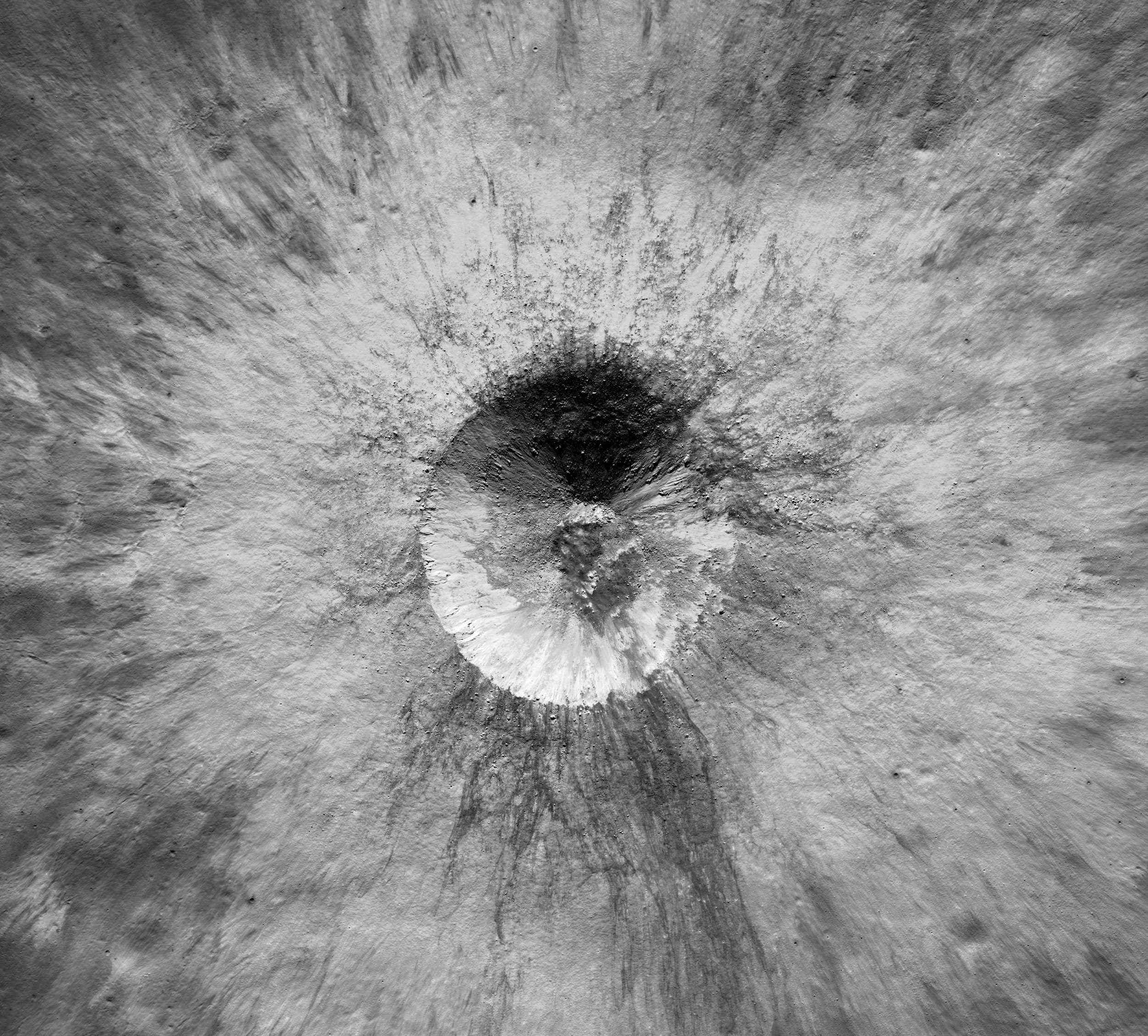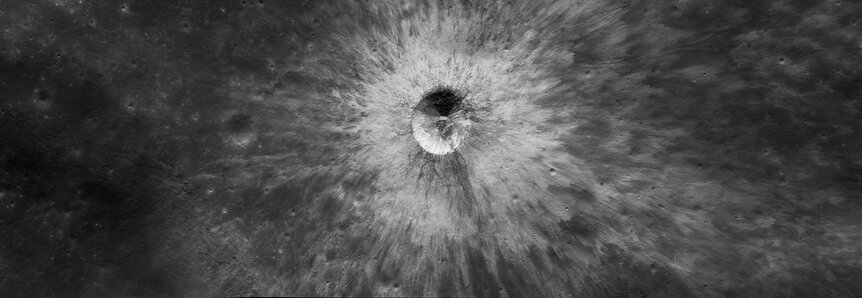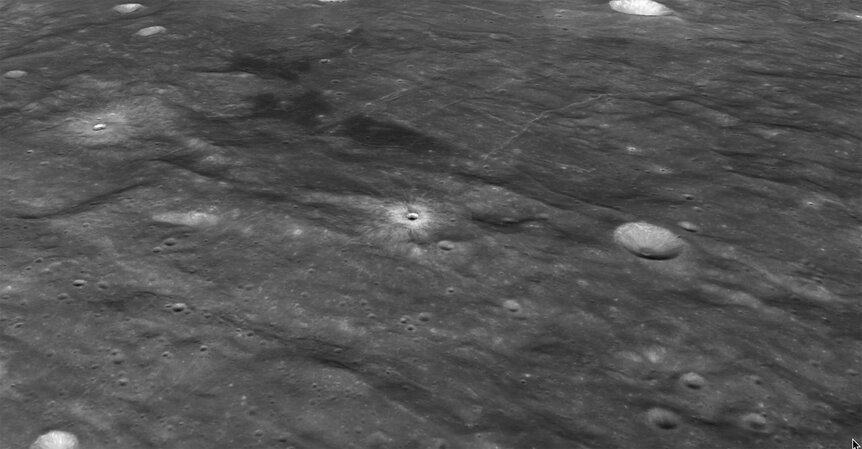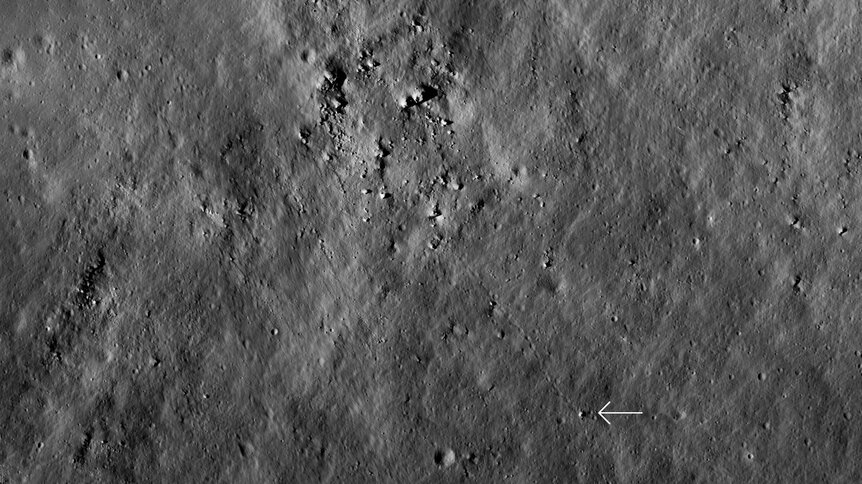Create a free profile to get unlimited access to exclusive videos, sweepstakes, and more!
When it comes to craters, what is "small"?

If you look at the Moon by eye, you can see big dark blotches on it — the maria (MAH-ree-uh, Latin for "seas", because they look bluish by day). These are huge impact sites, which, some time later, flooded with basaltic lava. Basalt is dark, so these giant regions stand out against the lighter moonscape.
Use a pair of binoculars to zoom in a little and more impact features come into view. Some craters are big enough to spot that way, like Tycho, one of the most prominent spots on the full Moon.
Use even a small telescope and suddenly hundreds, thousands of craters become visible. Some are large, more are medium, and most are smaller, right down to the resolution limit of your 'scope. That's (literally) natural; big impacts are rare, small ones common. Think of it this way: If you take a rock and hit it with a hammer, you get a couple of big pieces, a handful of medium ones, and a gazillion tiny ones. It's the same with asteroids, so there are far more small ones available for impacts than big ones.
The Moon is covered in small craters, saturated with them in many places. But it depends on what you mean by "small".
Let me show you.
What a beauty! This image was taken by the Lunar Reconnaiassance Orbiter on November 3, 2018, not very long ago. To an experienced eye, this unnamed crater is clearly young — though on the Moon that means something different than it does here. It's may be tens of million years old or more, but still looks fresh.
The clues are in the image itself. There are no smaller craters on top of it; all the craters you see in the image appear to be overlain by the material of the impact, making them older. And the ejected material (called ejecta) is another big clue; over time the solar wind and micrometeorite impacts weather it, making it darker and duller. The ejecta is still bright and clean.
That means the effects of the impact are still obvious. A lot of material was blasted out horizontally, creating the more-or-less circular bright apron immediately around it, and much was also shot away in wave-like plumes, reaching quite some distance from the impact point and overlapping like petals in a flower.
You can also see dark tendrils, densest to the immediate right of the crater. This looks like deeper material that was flung nearly straight up, taking more time to go up and fall than the material making up the crater's apron. It settled after, creating those delicate features when it came back down.
The crater bowl has a sharp rim, with some evidence of material sliding back down after it formed (look around the bowl walls to see that). There's also a central mound, created as the immense pressure from the impact made the rock flow like a liquid; it moved outward and then back in, colliding in the middle and raising up that mound. That's very common in smaller craters.
Which brings me back to size. How big is this crater? It turns out to be about 1.8 kilometers across — just over a mile.
On Earth, a crater like this seen today would be a tourist destination from around the world. Meteor Crater in Arizona is only 1.2 kilometers across, so this one is half again bigger. It's estimated that the asteroid that impacted in Arizona probably released about 15 – 20 megatons of energy, the equivalent of detonating 15 – 20 million tons of TNT. That's an explosive yield about as big as the largest nuclear weapons ever tested. An impact like this today would have devastating local effect.
Yet the crater on the Moon is bigger, and thus likely was even more energetic. But the funny thing is, for the Moon, 1.8 km is small. When you back out a bit and get a more overall view of that area, you can see that:
Yeah. Suddenly it doesn't stand out quite so much, does it? And you can easily see many craters much larger. I'm glad the LRO page gave the local latitude and longitude of the crater (3.1˚N, -79˚E) because otherwise I never would've found it on a map. Even if you pointed Hubble at this part of the Moon, that crater would be too small to see as anything but a dot a pixel or three across.
"Small" is contextual.
I urge you to look at the map of that area; it's beautiful, and provides some of that context. You can also grab a huge (467 Mb) image of the young crater that shows tremendous detail of the area — the image is 9,300 x 52,700 pixels, so yeah, it's really something. Poking around it I saw so many amazing things.
To the south (down in the crater images, or to the right in the context oblique map image), about a third of the way between the young crater and the much bigger one 20 km or so away, there is a smooth, eroded depression, what looks to my eye to be a very old crater. In the huge image, looking at the part of that depression nearest the young crater, I found this:
The upper left is flat terrain, just south of the young crater. As you look more toward the center you're looking downhill, toward the depression center. You can see streaks of material that have slid downhill (disturbed by the young crater's impact event, perhaps?), and lots of boulders here and there. But you can also see one (arrowed) that rolled down the depression wall, bouncing as it did so, leaving that dashed track. What a sight that must have been! The boulder is about 10 meters across at least — as big as a house! — and that track is nearly half a kilometer long. Standing there watching that would've been terrifying.
Though not nearly as scary as if you'd been there when the young crater itself formed. It would've been a catastrophic event… yet when you look at the Moon overall, it's lost in the myriad of craters just like it, hundreds of thousands of them all over that great chunk of rock orbiting our planet.
Small is contextual. It's a thought hammered home to every astronomer and planetary scientist every day. Perhaps it's something that might help provide context in your own life, too. It's certainly a lesson I think we all need, sometimes.






























